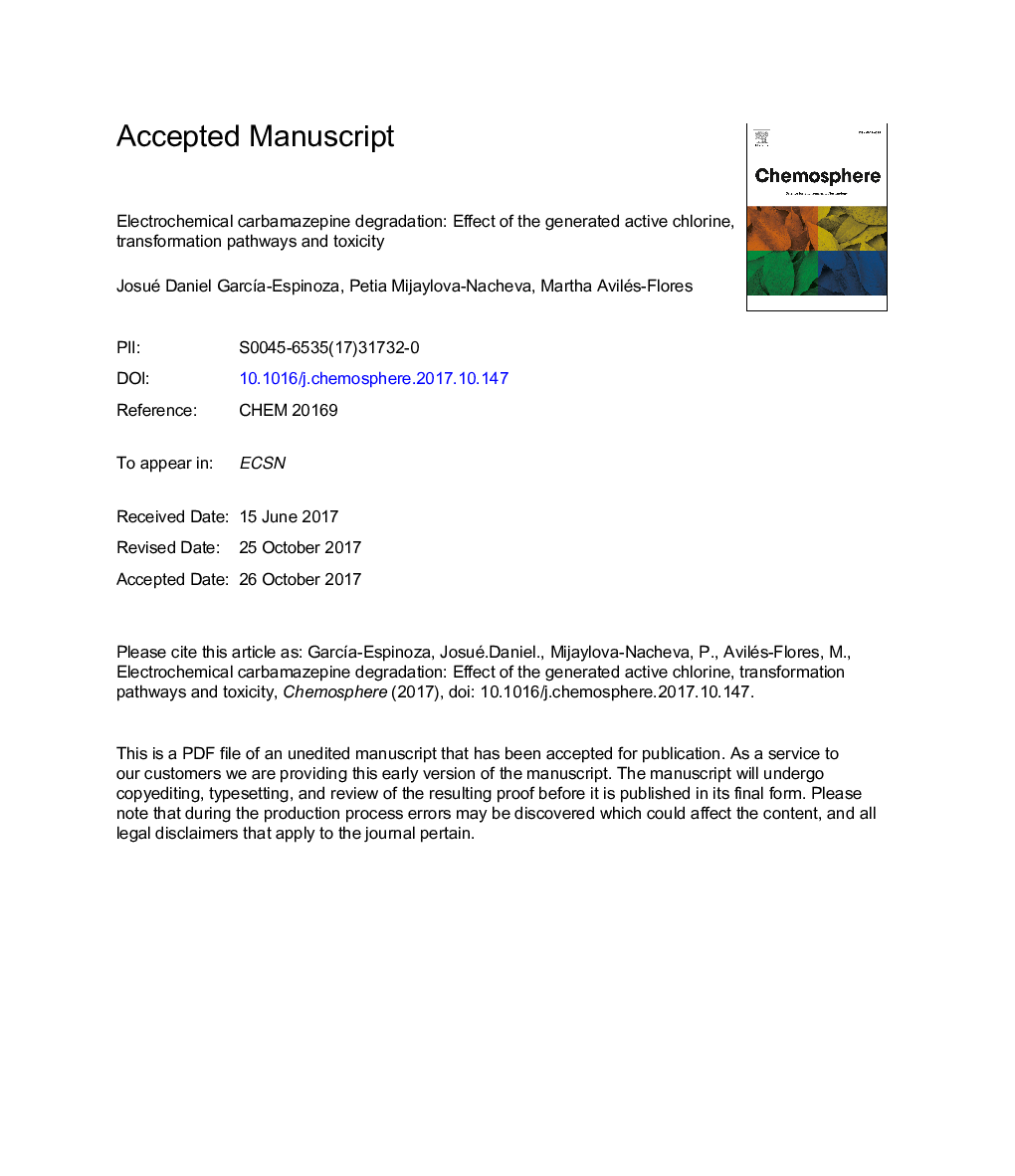| کد مقاله | کد نشریه | سال انتشار | مقاله انگلیسی | نسخه تمام متن |
|---|---|---|---|---|
| 8852796 | 1618779 | 2018 | 30 صفحه PDF | دانلود رایگان |
عنوان انگلیسی مقاله ISI
Electrochemical carbamazepine degradation: Effect of the generated active chlorine, transformation pathways and toxicity
ترجمه فارسی عنوان
تخریب الکتروشیمیایی کاربامازپین: اثر کلر فعال فعال، مسیرهای انتقال و سمیت
دانلود مقاله + سفارش ترجمه
دانلود مقاله ISI انگلیسی
رایگان برای ایرانیان
کلمات کلیدی
کلر فعال کاربامازپین، اکسیداسیون الکتروشیمیایی، سمی بودن بی جان،
موضوعات مرتبط
علوم زیستی و بیوفناوری
علوم محیط زیست
شیمی زیست محیطی
چکیده انگلیسی
Carbamazepine (CBZ) is a biorecalcitrant pharmaceutical compound frequently detected in wastewater and water bodies which has numerous negative effects on living organisms. In this investigation the effect of electrocatalytically generated active chlorine on CBZ degradation was studied using Nb/BDD or Ti/IrO2 anodes. Subsequently, a response surface methodology based on a factorial plan and central composite design was carried out to determine the contribution of individual factors and to obtain the optimal experimental parameters for CBZ abatement. Electric current and treatment time were found to be the pivotal parameters influencing the degradation efficiency with respective contributions of 45.19% and 35.44%. The anode material had lower influence on the response, however, using an Nb/BDD anode, the oxidation was more effective due to the increased production of OH radicals as well as HClO, Cl and ClOâ species. Considering CBZ degradation and energetic consumption, the percentage of degraded CBZ was 88.70 ± 0.35% consuming 1.07 kWh mâ3 (at 1.0 A, NaCl concentration of 14 mM after 12.45 min, using Nb/BDD anode). First order kinetic constant (k) value of 0.189 minâ1 was obtained at optimal conditions when demineralized water was used for the NaCl supporting electrolyte, while k was lower when tap water or treated wastewaters were used for this purpose. Oxidation of CBZ yielded six aromatic intermediates, identified by gas chromatography - mass spectrometry technique and degradation pathways were proposed. The performed acute toxicity tests indicated an increase during the treatment, which was demonstrated to be mainly attributed to the remnant active chlorine.
ناشر
Database: Elsevier - ScienceDirect (ساینس دایرکت)
Journal: Chemosphere - Volume 192, February 2018, Pages 142-151
Journal: Chemosphere - Volume 192, February 2018, Pages 142-151
نویسندگان
Josué Daniel GarcÃa-Espinoza, Petia Mijaylova-Nacheva, Martha Avilés-Flores,
